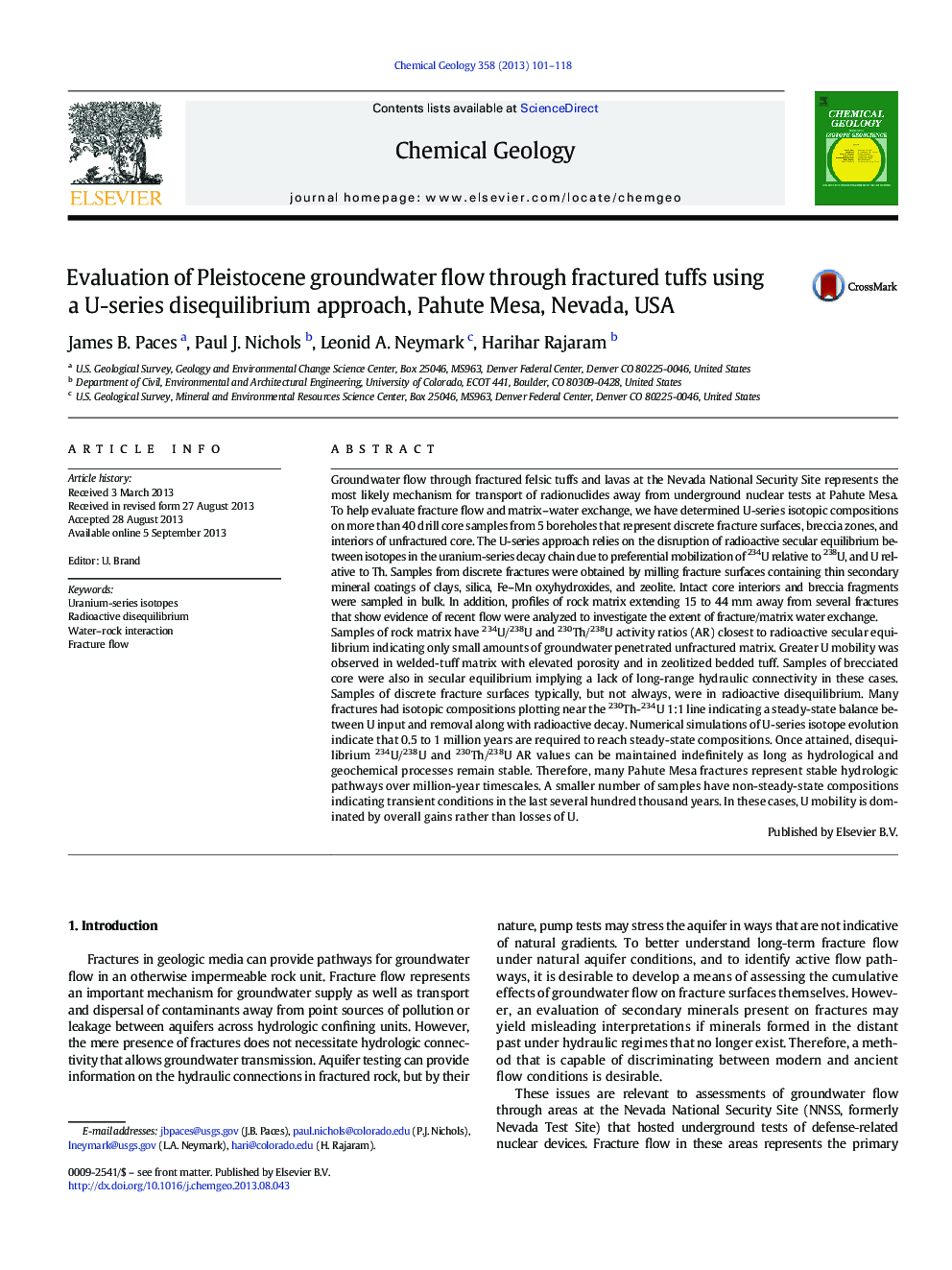| Article ID | Journal | Published Year | Pages | File Type |
|---|---|---|---|---|
| 6436814 | Chemical Geology | 2013 | 18 Pages |
â¢Active groundwater flow along discrete fractures is evaluated using 238U-234U-230Thâ¢Degree of radioactive disequilibrium reflects amounts of water/rock interactionâ¢Fractures have greater disequilibrium than rock matrix confirming greater fluxesâ¢Equal 234U/238U and 230Th/238U activities indicate steady-state flow conditionsâ¢Numerical simulations indicate many fractures remain hydraulically active for > 1 Ma
Groundwater flow through fractured felsic tuffs and lavas at the Nevada National Security Site represents the most likely mechanism for transport of radionuclides away from underground nuclear tests at Pahute Mesa. To help evaluate fracture flow and matrix-water exchange, we have determined U-series isotopic compositions on more than 40 drill core samples from 5 boreholes that represent discrete fracture surfaces, breccia zones, and interiors of unfractured core. The U-series approach relies on the disruption of radioactive secular equilibrium between isotopes in the uranium-series decay chain due to preferential mobilization of 234U relative to 238U, and U relative to Th. Samples from discrete fractures were obtained by milling fracture surfaces containing thin secondary mineral coatings of clays, silica, Fe-Mn oxyhydroxides, and zeolite. Intact core interiors and breccia fragments were sampled in bulk. In addition, profiles of rock matrix extending 15 to 44Â mm away from several fractures that show evidence of recent flow were analyzed to investigate the extent of fracture/matrix water exchange.Samples of rock matrix have 234U/238U and 230Th/238U activity ratios (AR) closest to radioactive secular equilibrium indicating only small amounts of groundwater penetrated unfractured matrix. Greater U mobility was observed in welded-tuff matrix with elevated porosity and in zeolitized bedded tuff. Samples of brecciated core were also in secular equilibrium implying a lack of long-range hydraulic connectivity in these cases. Samples of discrete fracture surfaces typically, but not always, were in radioactive disequilibrium. Many fractures had isotopic compositions plotting near the 230Th-234U 1:1 line indicating a steady-state balance between U input and removal along with radioactive decay. Numerical simulations of U-series isotope evolution indicate that 0.5 to 1 million years are required to reach steady-state compositions. Once attained, disequilibrium 234U/238U and 230Th/238U AR values can be maintained indefinitely as long as hydrological and geochemical processes remain stable. Therefore, many Pahute Mesa fractures represent stable hydrologic pathways over million-year timescales. A smaller number of samples have non-steady-state compositions indicating transient conditions in the last several hundred thousand years. In these cases, U mobility is dominated by overall gains rather than losses of U.
Graphical abstractDownload full-size image
